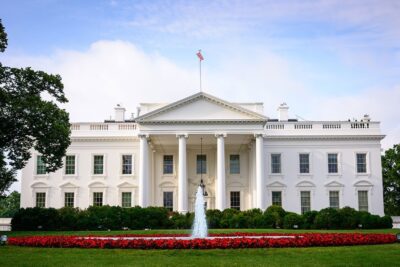DEI under Fire: What Trump’s policies mean for higher education
The latest executive orders on DEI and civil rights added to the growing list of federal policies fueling uncertainty in higher education. Institutions are caught in the middle, working to comply with shifting federal and state directives while staying true to inclusivity commitments. With compliance deadlines looming and political pressures mounting, many leaders face impossible questions: How will these changes impact enrollment, funding, and school reputation? And, most importantly, what do they mean for the well-being of students, faculty, and staff?
To help institutions meet this moment confidently, we’ve created a series of policy primers and discussion guides—all available in our Federal Policy Resource Center—to give higher ed leaders the information and tools they need. This piece focuses on the federal directives surrounding DEI and civil rights, breaking down the latest changes and their impact on colleges and universities.
What we know and what to do about DEI changes in higher ed (so far)
Two executive orders signed in January 2025 directly targeted DEI policies and programs, restricting race-conscious hiring, financial aid, and student support initiatives. Then, in February, the Department of Education issued its infamous “Dear Colleague” letter that attempted to expand the 2023 SCOTUS ruling in Students for Fair Admissions v. Harvard beyond admissions. The letter warned institutions that using indirect methods—such as race-conscious hiring, scholarships, or student support services—would be considered a violation of federal law. Colleges were directed to eliminate any race-based policies by the end of February or risk losing federal funding.
In March, the Department of Education added to the conversation surrounding the original DCL letter by releasing a new FAQ document. This document clarifies investigation processes, extends interpretations of previous rulings, and outlines permissible cultural programming while reinforcing non-discrimination requirements across all school operations. One of the key takeaways of the FAQ is its focus on balancing First Amendment rights with Title VI obligations, emphasizing the importance of a race-neutral approach to discipline and free speech protection. But, while the FAQ offers clearer guidelines, it also introduces new interpretations that may raise more questions and compliance pressures (again).
It’s important to recognize that while there is significant pressure to comply with these directives, the DCL and related executive orders are not the law and are currently facing legal challenges. This creates a gray area regarding the enforceability of these federal mandates, leaving institutions unsure whether to implement a wait-and-see approach or move into preemptive action.
Our DEI primer highlights key changes and offers recommendations across a wide variety of topics, including antisemitism, gender identity protections, and Title IX. Below, we break down the race-based implications following the DCL letter.
Attempts to eradicate race-based action in schools
-
Key Changes:
- “Illegal DEI” = any action that treats a person of one race differently than it treats another person because of that person’s race, the educational institution violates the law.
- Institutions had 14 days to cease any and all policies and practices that meet that standard.
- Officials have launched OCR investigations into 45 universities under Title VI, reiterating schools’ obligation to end racial preferences and stereotypes in educational programs and activities. The investigations primarily focus on allegations that these institutions have violated Title VI by partnering with “The Ph.D. Project”.
-
Recommendations:
- Audit current policies and practices for potential vulnerabilities.
- Discuss alternative strategies for supporting student success without using “proxies”.
- Don’t jump to pre- or over-compliance—there is a major risk to unnecessarily removing programs and practices that benefit the campus community and risking negative public perception.
What’s next for higher ed?
Institutions now face an impossible balancing act: comply with federal mandates or stand firm in their commitments to DEI, knowing the financial and legal risks involved. It’s important to recognize that while there is significant pressure to comply with these directives, the DCL and related executive orders are not the law and are currently facing legal challenges.
Higher ed has faced turbulent times before. Leaders still have agency in these situations and must focus on the power of preparation, coordination, and advocacy. Our team at EAB has worked alongside colleges and universities through past waves of federal action, and we continue to do so now. By staying informed and acting strategically, institutions can make the best possible decisions for their students, faculty, and staff.
Visit our Federal Policy Resource Center for the latest updates, practical resources, and information about our scenario planning workshops to help your institution strike the right balance. For more details about DEI and how to prepare, download our primer or get in touch with us by filling out the from below.
Make Informed Decisions in Today's Political Landscape
To learn more about our resources or to schedule a scenario planning workshop, please fill out the form.

More Blogs

Responding to federal policy shocks: What we learned from nearly 50 higher ed institutions

University research is at a crossroads. Here are three key questions academic leaders must answer.
